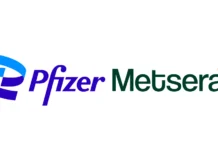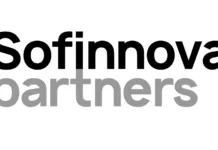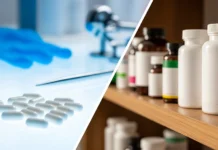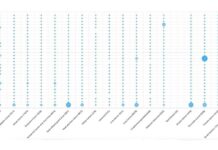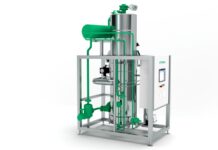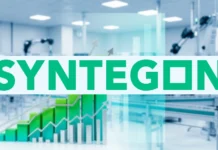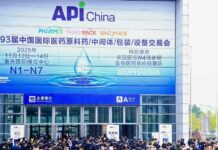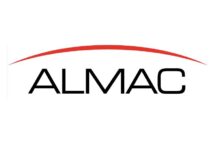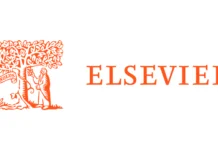Precedence Research estimates that the worldwide market for pharmaceutical temperature-controlled packaging solutions would be worth roughly USD 843.5 million by 2028. This expansion is being driven by an increase in demand for temperature-sensitive medications, as well as the necessity for efficient packaging solutions that can keep pharmaceutical items intact. In the following sections, we will provide a comprehensive review of the pharmaceutical temperature-controlled packaging solutions market, including its drivers, industry trends, and competitive landscape.
The pharmaceutical industry has seen a considerable increase in the creation of temperature-sensitive products, such as vaccines, biologics, and speciality medicines. To maintain their safety and effectiveness, these items must be kept at certain temperatures throughout the supply chain. Consequently, pharmaceutical businesses are constantly researching packaging options that can maintain the proper temperature range throughout storage and transit. The market for temperature-controlled pharmaceutical packaging includes a wide variety of items such as insulated shipping containers, temperature monitoring systems, phase change materials, and thermal packaging accessories. These solutions are precisely engineered to offer thermal insulation, real-time temperature monitoring, and protection against temperature fluctuations, ensuring the entire integrity of pharmaceutical goods.
The pharmaceutical temperature-controlled packaging market is expanding due to the increasing use of temperature-sensitive biologics and customized medications such as vaccinations and protein-based therapies. Stringent temperature control is required to ensure the stability and efficacy of these goods. The growing frequency of chronic diseases, as well as the desire for individualized therapies, drives the need for temperature-controlled packaging solutions. Regulatory standards from organizations such as the FDA and EMA drive market growth by prioritizing product quality, effectiveness, and patient safety across the supply chain. As a consequence, pharmaceutical businesses are investing in sophisticated packaging solutions to comply with requirements while maintaining quality standards.
The competitive landscape of the temperature-controlled pharmaceutical packaging market is characterized by fierce rivalry between global competitors. To obtain a competitive edge, these firms concentrate on creative, low-cost packaging solutions. Collaborations and collaborations with pharmaceutical makers and logistics providers are increasing, resulting in complete temperature-controlled solutions. The industry is moving toward sustainable packaging solutions as businesses emphasize eco-friendly materials and technology to lower their carbon impact. Technological improvements, such as IoT and data analytics, are critical in allowing real-time temperature monitoring and bringing insights into the supply chain for improved control and visibility.
The pharmaceutical industry’s supply chain is extensively interconnected throughout the world, yet it is vulnerable owing to reliance on a single supplier for crucial ingredients. This susceptibility is exposed during local conflicts and natural calamities. About 40% of pharmaceutical commerce is limited to certain locations, which is somewhat less than other sectors. For example, a major portion of streptomycin and chloramphenicol marketed in North America and the European Union are sourced from China. Companies might reduce such risks by diversifying their material buying processes. They might consider local supplier diversification, nearshoring from adjacent areas, or offshore outsourcing to new places with better terms. Diversifying sourcing regions improves resilience and offers a more stable and consistent supply of commodities.
North America is the leading market for temperature-controlled packaging solutions in the pharmaceutical business, with a sizable market share. This expansion is linked to increased demand from the healthcare industry. The area has an urgent need to transport vaccines, pharmaceuticals, and perform clinical studies, resulting in significant increase in the temperature-controlled packaging industry. Notably, North America, notably the United States, is home to a large number of well-known market players who are actively creating new technology and efficient procedures for cold chain systems. However, the current strain of coronavirus has disrupted the worldwide pharmaceutical supply chain, posing a serious risk to key market competitors. China, sometimes known as the “world’s factory,” has played a key part in this upheaval. Lockdowns, production slowdowns, raw material shortages, and labor shortages have all had a knock-on effect on the global supply chain, particularly in North America’s temperature-controlled pharmaceutical packaging sector. As a result, this market is vulnerable to threats presented by the worldwide pandemic and its effects on the supply chain.
Companies may mitigate these risks by diversifying their material purchase, lowering their vulnerability to possible interruptions. This may be accomplished via tactics such as local supplier diversity, nearshoring options, and offshore outsourcing to get supply from a variety of sources. Companies may increase their resilience by diversifying their sourcing regions, ensuring a consistent and stable supply of inputs.
The Asia-Pacific region is expected to have the greatest compound annual growth rate (CAGR) in the pharmaceutical temperature-controlled packaging solutions sector. This increase is due to rising demand for insulated packaging in nations such as Japan, China, and India. The continued effect of the coronavirus pandemic, as well as limitations on the export of vital active pharmaceutical ingredients (APIs) from India, bolster Asia Pacific’s economic prospects. Furthermore, restrictions placed on major generic medication manufacturers located in the United States, whose supply chains depend significantly on Chinese suppliers, help to fuel the region’s booming industry. These elements, taken together, contribute to the pharmaceutical temperature-controlled packaging solutions industry’s development potential in Asia Pacific.
The choice to transfer pharmaceutical activities is usually impacted by reasons other than economics. Governments often emphasize national security and self-sufficiency, leading them to encourage home manufacturing. Notable examples include the Indian government’s attempt to boost domestic bulk pharmaceuticals and medical device manufacture with a $1.3 billion stimulus package. Similarly, the Austrian government is working with Sandoz International to invest in antibiotic manufacturing, assuring a consistent supply across the country. These cases demonstrate government actions and expenditures targeted at improving local manufacturing capabilities and ensuring vital supply in the pharmaceutical industry.
Certain pharmaceutical goods meet the highest industry standards, defined by their use of high-quality components and outstanding durability. These goods are intended to be reused, highlighting their durability and sustainability. These offers are subject to stringent quality controls, guaranteeing that clients obtain goods that exceed industry standards, providing exceptional performance and dependability.




